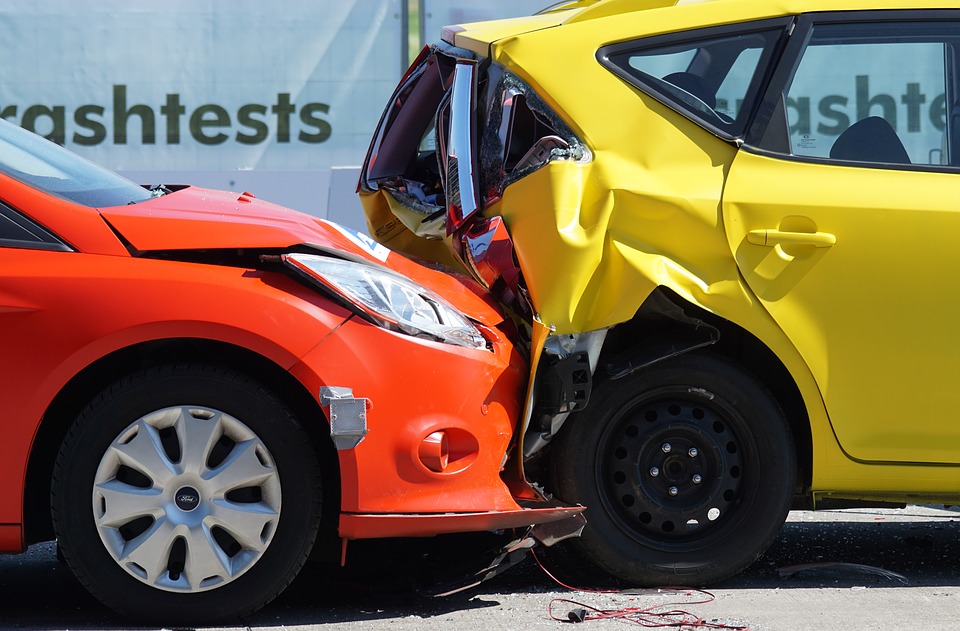Child injury and death from car collisions are unfortunately all too common, but the Michigan Office of Highway Safety Planning (OHSP) is part of a campaign to help raise awareness as to how parents can help reduce the risk of injury or death to their kids while traveling in the car. The week of September 17th through the 23rd is National Child Passenger Safety Week, and aims to shed light on the importance of using proper restraints for kids when traveling in a vehicle.
According to the U.S. Department of Transportation, automobile accidents are the leading cause of unintentional deaths for children ages 1-13. The National Security Council reports that in 2015 alone, 1,346 children under the age of 15 were killed in motor vehicle accidents, which is an average of more than 3 kids per day. While these statistics are scary, luckily, there are ways parents can help to reduce the likelihood of their child being injured or killed in a car crash. The simplest way to avoid child car accident injuries is by using the proper restraints. In 2012 alone, the lives of 284 kids, ages 5 and under, were saved due to restraint use, according to Safe Kids. Using car seats, seat belts, and booster seats can reduce the risk of injury or death by up to 50%. Safe Kids also gives the following tips on to how to keep young passengers safe while traveling.
Child Car Seat Safety Tips
- The back seat is the best. It is the safest place to ride for all children under the age of 13. Not all cars allow for a car seat in every place that has a seat belt. Check your car owner manual to see where you can put a car seat.
- Be wary of toys in the car. Choose toys that are soft and will not hurt your child in a crash. Secure any loose objects in the car.
- Wear your seat belt. We know that when adults wear seat belts, kids wear seat belts. So be a good example and buckle up for every ride. Be sure everyone in the vehicle buckles up, too.
- Never leave your child alone in a car, even for a minute.
Safe Kids recommends that children need to be riding in some sort of restrained device until the age of 13. According to the OHSP, children who are under the height of 4 feet and 9 inches cannot fit comfortably in a seat belt, making them more likely to tuck it behind their back or under their arm, thereby reducing its effectiveness. Seat belts are designed to fit across the hips and shoulders, which are the strongest part of the body. Booster seats lift up smaller children to allow the seat belt to fit properly. According to the OHSP, less than half of children aged 4-7 in the state of Michigan are using booster seats. As kids get older, the use of restraints goes down, even though booster seats are cheaper and easier to use than car seats. Older children are at risk too, as kids over the age of 14 are more likely to not use a seat belt at all.
Michael L. Prince, director of the Michigan branch of the OHSP, says that the goal is not to scare parents, but to make them aware of the risks that come with not restraining child passengers properly. They also want to provide encouragement by reinforcing how useful car seats and booster seats are when it comes to reducing the number of child injuries and deaths from car accidents. Prince also said that the timing of the campaign is intentional. With school starting, kids are being driven back and forth not only to school, but to sports practices and other activities. The OHSP wants to make sure that parents are ensuring their kids are safe during travel times.
While no parent can guarantee that their child won’t be involved in an automobile accident, they can guarantee that their child is properly restrained. For younger children, it's as simple as making sure they are using car seats and booster seats until they are big enough for seat belts to fit properly. For older children, it's important for parents to set a good example and make sure they are wearing their seat belt so that even when they are not travelling with you, teenagers will remember to wear one. In making child car safety a priority, parents are responsibly helping keep their children as safe as possible in the event of a motor vehicle accident.
Using the proper restraints can reduce the risk of death or injury to children, in the event of a car accident. If you or a loved one have been injured in an automobile accident, call The Michigan Law Firm, PLLC at 844.4MI.FIRM for a free consultation. Our attorneys are experienced in handling all types of automobile accident cases, especially those involving children. Our car accident lawyers understand that while car crashes can be confusing enough for adults, they can especially take a toll on children.






